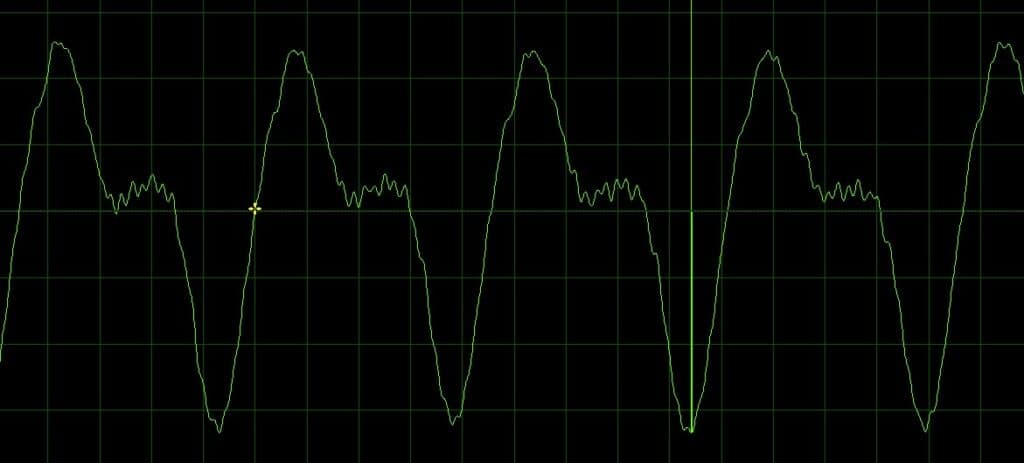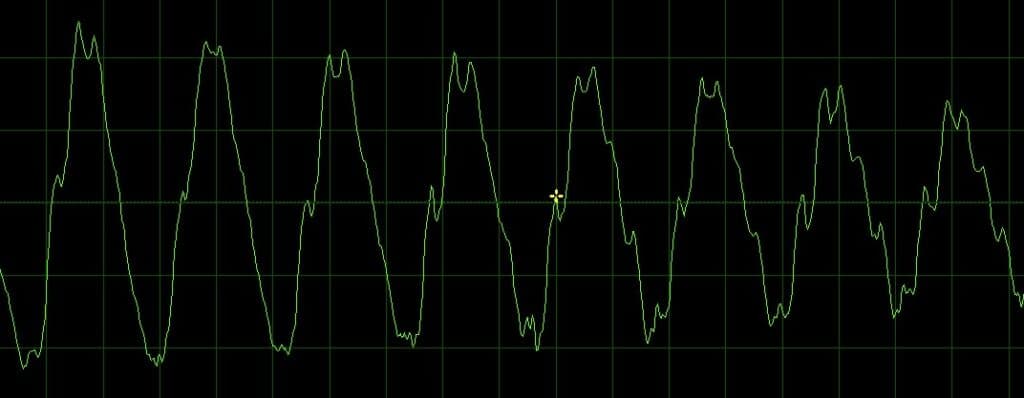In music, various elements come together to create a rich and immersive experience. While melody, harmony, and rhythm are commonly recognized as the primary building blocks of musical expression, there is another, more subtle aspect that significantly contributes to the character and emotional impact of a piece.
Timbre, also known as tone color or quality, is the characteristic sound of a particular instrument or voice. Timbre is what makes one instrument or voice sound different from another, even when they are playing or singing the same pitch at the same volume.
This elusive quality shapes our perception of different instruments and voices, allowing us to distinguish between them even when they share the same pitch and loudness. As listeners, we are often unaware of how much this attribute influences our experience of music. Still, it plays a crucial role in defining the unique sonic identity of individual performers and ensembles.

Timbre is determined by several factors, including the harmonics or overtones that are present in a sound, the way in which the sound is produced (how the instrument is played, e.g., plucked, bowed, struck, or blown), and the physical properties of the instrument or voice. For example, a guitar and a piano playing the same note at the same volume will sound different due to the unique combination of harmonics present in each instrument’s sound.
These overtones create a complex waveform that gives each instrument or voice its unique tonal signature.
Instrument Waveform Examples
Here are a couple of waveform examples that I took using an oscilloscope:
A Guitar Playing a Single Note

Note the similarities between the guitar being picked and the piano. Both are stringed instruments where the sting has been struck. In case you’re wondering, No, I didn’t just invert the waveforms. I sampled each instrument playing an “A” note
A Piano Playing a Single Note

A Woman Singing a Note

This is a female vocalist holding a note. Notice the decay as she holds the note and starts running out of breath. Also, notice the unique shape of the wave compared to the previous stringed instruments.
Timbre is an important aspect of music, as it can greatly affect the emotional impact of a piece of music. Musicians and composers use timbre to create a wide range of different moods and feelings, from bright and cheerful to dark and mournful. Timbre can also be manipulated through various techniques such as filtering, equalization, and modulation to create exciting and unique sounds in music.
How Do You Describe The Timbre Of A Voice Or Instrument?
Describing the timbre of a voice or instrument can be somewhat subjective, as it involves using adjectives and comparisons that evoke a sense of the sound’s unique qualities. Here are some common terms and approaches to describe timbre:
Register
Refers to the range of pitches, often classified as low, middle, or high. For example, a bass voice has a low register, while a soprano voice has a high register.
Warmth/Brightness
Describes the overall tonal quality. A warm sound may be described as rich, mellow, or full, while a bright sound can be characterized as clear, brilliant, or sharp.
Resonance
Refers to the sustained quality of a sound. A resonant sound might be described as deep, full, or ringing, while a non-resonant sound could be thin or shallow.
Texture
Describes the complexity or density of the sound. A smooth texture might be described as pure, clean, or even, while a rough texture could be described as gritty, grainy, or harsh.
Attack/Decay
Refers to how quickly a sound begins and fades away. A fast attack might be described as sharp, sudden, or crisp, while a slow attack could be described as gentle or gradual. Similarly, a rapid decay could be described as short or abrupt, while a slow decay might be called lingering or sustained.
Vibrato
Refers to the slight pitch fluctuation in a sustained sound. Vibrato can be described as wide or narrow, fast or slow, depending on the rate and extent of the pitch variation.
Articulation
Describes the clarity and separation between individual notes or phrases. Legato articulation is smooth and connected, while staccato articulation is short and detached.
Comparisons
Comparing the timbre of a voice or instrument to familiar sounds can help convey its quality. For example, a voice might be described as “silky” or “velvety,” while an instrument could be likened to “a glassy bell” or “a warm blanket.”
When describing timbre, it’s helpful to combine several of these terms and comparisons to paint a more complete picture of the sound. Keep in mind that these descriptions are somewhat subjective and may vary depending on the listener’s experience and preferences.
Can You Change The Timbre Of Your Voice?
You can change the timbre of your voice to some extent through various techniques, exercises, and practice. It’s important to note that each person’s voice has a unique quality based on factors like genetics, anatomy, and vocal cord structure, which can limit the range of possible timbral changes. However, you can still make noticeable changes to the timbre of your voice by focusing on the following aspects:
Breathing
Proper breath control and support are essential for producing a desirable vocal tone. Developing diaphragmatic breathing techniques can help you produce a more consistent and controlled sound.
Resonance
How you shape your vocal tract and manipulate the spaces within your mouth, throat, and nasal cavities affects your voice’s resonance and overall timbre. Experimenting with different tongue, jaw, and mouth positions can help you find the most pleasing resonance for your voice.
Vocal placement
Focusing your voice forward (toward the mask or the front of your face) can brighten the timbre and add clarity. Alternatively, directing the voice more towards the throat or chest can produce a darker or warmer tone.
Vowel modification
Changing the way you shape your vowels can impact the timbre of your voice. For instance, modifying an “ee” vowel toward “ih” can brighten the tone, while adjusting “ah” toward “aw” can darken it.
Articulation
Paying attention to how you articulate consonants and vowels can help you refine your voice’s timbre. Clear enunciation and avoiding tension in the tongue and jaw can lead to a more pleasant sound.
Vocal health
Maintaining good vocal hygiene, such as staying hydrated, avoiding excessive vocal strain, and practicing vocal warm-ups and cool-downs, can help you maintain or improve the overall quality of your voice.
Training
Working with a voice coach or singing teacher can help you develop techniques to change the timbre of your voice more effectively. They can provide personalized guidance and feedback to help you achieve the desired sound.
Remember that everyone’s voice has unique qualities, and some aspects of timbre may be difficult or impossible to change completely. Embrace the natural characteristics of your voice while focusing on healthy technique and gradual improvements.
What Is The Difference Between Timbre And Tone?
In the context of music, the terms “timbre” and “tone” are often used interchangeably, but they can have distinct meanings depending on the context.
Timbre, as previously mentioned, refers to the unique quality or color of a sound that distinguishes it from other sounds, even when they have the same pitch and loudness. Timbre is what makes a piano sound different from a violin or a human voice, even when they are all playing the same note at the same volume. Various factors, such as the physical properties of the sound source, the method of sound production, and the harmonic content of the sound wave influence timbre.
Tone, on the other hand, can refer to a few different aspects of sound or music:
- In a general sense, “tone” is sometimes used as a synonym for “timbre” or “tone color,” referring to the unique quality of a sound.
- In a more specific sense, “tone” can refer to an individual musical sound or pitch, often produced by a voice or musical instrument.
- In the context of music theory, a “tone” (also called a whole tone) can represent the interval between two pitches, such as the distance between C and D on a piano keyboard. This is a whole step or whole tone apart.
- “Tone” can also describe a piece of music’s overall quality or character, encompassing elements like mood, atmosphere, and emotional impact.
In summary, “timbre” refers specifically to the unique quality or color of a sound, while “tone” can have several meanings, including an individual musical sound, a pitch interval, or the overall character of a piece of music. When used as a synonym for “timbre,” the distinction between the two terms becomes less clear, and they can be interchangeable. However, it is essential to consider the context in which the terms are used to understand their specific meanings accurately.
Can The Ear Be Trained To Distinguish Timbre?
The ear can be trained to distinguish timbre through consistent practice and active listening. Developing a more refined sense of timbre can enhance your appreciation for music and improve your ability to identify different instruments, voices, or sound sources. Here are some steps to help you train your ear to distinguish timbre:
Active listening
Focus on the sounds you hear in music and try to identify the specific qualities that make each instrument or voice unique. Pay attention to aspects like attack, decay, resonance, and articulation, as well as the overall character of the sound.
Compare and contrast
Listen to recordings of different instruments or voices playing the same piece of music or the same note. Notice the differences in timbre that allow you to distinguish between them.
Study instruments
Learn about the construction, materials, and playing techniques of various musical instruments. Understanding how instruments produce sound can help you recognize their unique timbral qualities.
Listen to different genres
Expose yourself to a wide range of musical styles and genres. This can help you become familiar with various instruments and the ways they are used in different musical contexts.
Transcription practice
Listen to a piece of music and try transcribing it or recreating it using notation software or a musical instrument. This exercise will challenge you to identify the specific instruments or voices used in the music and their distinct timbral qualities.
Ear training exercises
Many ear training resources are available, including websites, apps, and books, that offer exercises designed to improve your ability to distinguish timbre and other musical elements like pitch, harmony, and rhythm.
Work with a teacher or join a group
If you are learning to play a musical instrument or sing, working with a teacher or joining a musical group can provide valuable guidance and feedback to help you develop your timbre recognition skills.
Remember that ear training is a gradual process; improvement comes with consistent practice and patience. Over time, you will become more adept at distinguishing timbre and better appreciate the rich palette of sounds in music.
Summary
In conclusion, timbre is a critical aspect of music that imbues each sound with its unique character and color. This distinctive quality allows us to differentiate between various instruments and voices, even when they produce the same pitch and volume. Timbre is influenced by factors such as the physical properties of the sound source, the method of sound production, and the harmonic content of the sound wave.
By actively listening and training our ears, we can develop a heightened sensitivity to timbre, enhancing our appreciation for the richness and diversity of musical expression. As a multifaceted and often overlooked element of music, timbre plays a vital role in shaping our emotional responses and overall listening experience.
Go to next lesson: What Are Sharp, Flat, And Natural Notes In Music?
Go to previous lesson: What Is A Music Note?
Back to: Module 1


